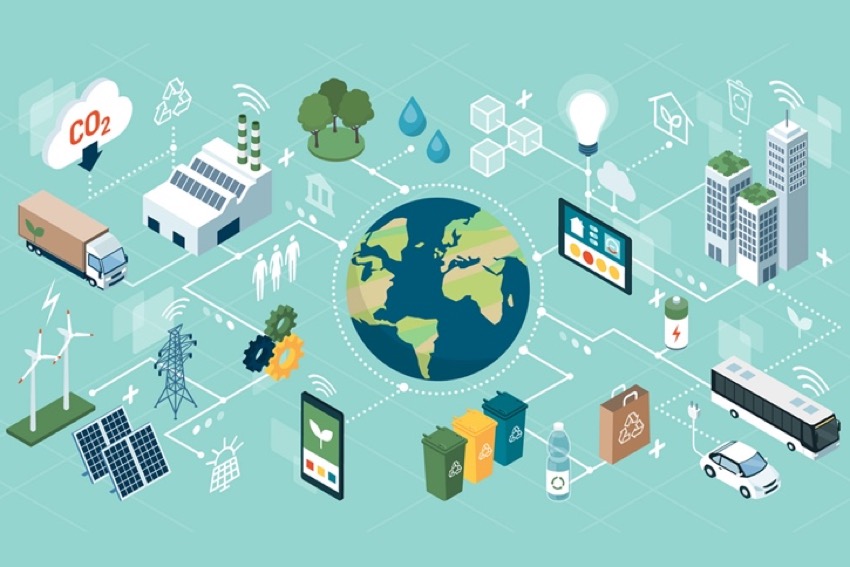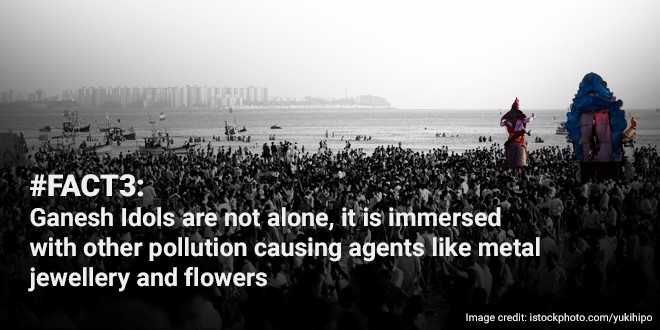Global Sustainability- Ecologically and Economically!
Sustainability means to meet our needs without compromising the needs for the future generations. Global warming is another cause of climate change which is caused by long-term heating of earth’s atmosphere which causes acid rain, skin cancer and many more. These are some of the hot topics in the current society which wants to go eco-friendly. Yet there are many industries that mass produce/dig up fossil fuels to run cars, rockets, machines and many more. These are some of the primary reasons why climate change is increasing. But People have invented renewable sources of energy which can have a huge impact on carbon dioxide emission. But how can we help in developing our environment sustainably and how are other companies helping in the progress? I read many articles about global warming and renewable sources of energies which had a huge impact on my perspective to the topic. For many people, sustainability is closely associated with environmental issues, in which case it is referred to as "environmental sustainability". In fact, the modern environmental movement gave rise to a higher prominence of the concept of environmental sustainability. The public is concerned about human impacts on the environment. The most dominant issues since about the year 2000 have been climate change, loss of biodiversity and environmental pollution and land degradation (such as deforestation and general degradation of ecosystems). These issues are also included in the concept of planetary boundaries. Three different areas (also called dimensions or pillars) of sustainability are normally distinguished: the environmental, the social, and the economic. Most concepts of sustainability share this understanding, even though they might differ in the details. Several terms are in use for this concept in the literature: authors speak of three interconnected pillars, dimensions, components, stool legs, aspects, perspectives, factors or goals. They are used interchangeably. For example, the 2005 World Summit Outcome document used the term "aspects". Nevertheless, the distinction itself is rarely being questioned. The emergence of the three-pillar paradigm has little theoretical foundation nor a theoretically rigorous description: It gradually emerged without a single point of origin. Air pollution is a major concern that people have to take care of as soon as possible before there is no going back. First of all, what is air pollution? Air pollution is the contamination of air due to the presence of substances in the atmosphere that are harmful to the health of the humans and other living beings, or cause damage to the climate or to materials. There are many different types of air pollutants, such as gases (including ammonia, carbon monoxide, sulfur dioxide, nitrous oxides, methane, carbon dioxide and chlorofluorocarbons), particulates (both organic and inorganic), and biological molecules. It can cause diseases, allergies, and even death to humans; it can also cause harm to other living organisms such as animals and food crops and may damage the natural environment. For example, carbon monoxide and CFCs produced from vehicles and refrigerators respectively eventually moves up in the atmosphere and cause depletion of the ozone layer which causes UV rays from the sun reach the surface of the earth. UV rays are a major cause for skin cancer and many other skin diseases. Not only that, but it is also causing global warming which is having a huge impact on the globe economically and on the people as mentioned above. And what are we doing to reduce any further damage to the environment and living creatures?

For a fact, we know that there has been a major debate on the topic a few years ago and people are coming up with ways to counter/tackle such as electric cars, solar plants, wind energy, hydro power and many more. In 2020, pollution (all kinds of pollution including air pollution) was responsible for about 1/8th of deaths in Europe and was a major risk factor for pollution related diseases such as heart problems, stroke and lung cancer. According to statistics, the published estimates of the death toll from air pollution span a wide range, as the chart above made clear. The number of deaths attributed to outdoor air pollution ranges from 3 million to almost 9 million per year. In addition, a large number of deaths are attributed to indoor air pollution. Vehicles being one of the largest contributors of pollution, electrizing the vehicles will have a tremendous impact on air pollution rates. Many companies are trying to thrive in the sector of electric cars. Huge companies like Tesla, Ford motors Rivian, etc. But why are companies so huge and profitable struggling to make an impact on the electric vehicle sector. And What are electric cars and how do they function. Electric cars use electricity as their primary source of fuel to run the cars rather than traditional diesel fuel. Electric cars function by plugging into a charge point and taking electricity from the grid. They store the electricity in rechargeable batteries that power an electric motor, which turns the wheels. Electric cars accelerate faster than vehicles with traditional fuel engines – so they feel lighter to drive. Tesla being a ginormous IT company which majorly sells electric cars has decreased the pollution rates significantly but has priced their vehicles for the upper-middle class people. Meaning not all can afford the electric cars which destroys the purpose of availability to the mass which in turn results in lesser lowering of pollution rates by other diesel vehicles. Electric cars are meant to be used in bulk by the people. Only then will it show an impact on the environmental pollution. So, if tesla could manufacture cars with a slightly lower standards of their interior and exterior along with a few economical upgrades to the power system, it could lower the cost of these cars and make them affordable to the middle and the lower-middle class people. These changes need not be made to all their cars buts just a few would bring them profits and help the environment tremendously. Although pollution by vehicles contributes a lot to environment pollution, it is not the only way of pollution. There are various ways and types of pollution like CO2 produced by generators which causes air pollution, idol immersions into water bodies on occasions of traditional festivals which causes water pollution, using plastic straws can cause soil pollution as it does not degrade in the soil and stays in its original form for hundreds of years, fossil fuel powered generators that produce electricity use a lot of fuel which depletes fossil fuel for the future generations. Sustainability is basically about pollution. When pollution is reduced, it is in turn helping create a sustainability environment. We are going to discuss more about these topics in detail in this blog.
Moreover, companies like Google (also known as Alphabet) have already started to reach the aim of clean and green environment. Reduction of air pollutants like O3, CFC’s and CO2 have become their primary goal towards their goal. Google (also known as Alphabet) is one of the top tier software companies which has a net worth of over $1.7 Trillion. Google is a company whose decision can affect millions of people around the world. The president of Google Europe, Mr. Matt Brittin wrote an article “Our data centers support Europe's green economic recovery” about how google is supporting in Europe’s green economic recovery. In the article, it was stated that Europe was aiming for a 55% reduction of CO2 emissions by 2030 along with thee 32% renewable energy target. And Google is supporting the cause by announcing that they are bringing nearly 1,700 megawatts of renewable energy projects in Belgium, Sweden, Denmark, Finland and the Netherlands. Taking the world's greenest data center fleet to the next level of AI technology helps reduce the energy that they use to cool their data centers by 30 percent, and they would make it available for use by airports, shopping malls, hospitals, data centers and other commercial buildings and industrial facilities. In Finland, their data center had brought €1.2 billion in investment and supported 1700 jobs every year since 2009. After reading the article, think Google is doing an amazing job of supporting the eco-friendly concept. Google is aiming to reduce about 30% of the energy use to cool their data centers and supporting thousands of people in Europe and around the world. It was also stated that Europe was aiming for a 55% reduction of CO2 emissions by 2030 along with thee 32% renewable energy target. Statistically speaking, Global carbon dioxide (CO2) emissions from fossil fuels and industry have increased considerably since 2000, and in 2019 reached a record high of 36.7 billion metric tons of CO2. In 2020, the COVID-19 pandemic caused global CO2 emissions to plummet five percent to 34.81 billion metric tons. It is projected that emissions rebounded in 2021 as lockdowns eased. The percentages might not look much but practically, it is a huge task to accomplish. Google has already started to work towards achieving their goal of clean and green environment. It not only is helping in environment ecological sustainability but also economical sustainability as it is providing jobs to thousands of people which is increasing the per capita income of a country and makes the family financially stable. In the end, Google is just one such company out of the many tech companies around the world and we cannot expect it to contribute more to the economy as it is a private company which must make money to support its employees and run the company. Furthermore, CO2 emission is not the only type of pollution there is. There are many more ways and many more companies that are trying to help the environment in any way possible.

Water pollution is another major factor after air pollution which is causing lot deaths of people and adversely affecting the growth of sustainability. Water pollution is the contamination of water bodies, usually as a result of human activities, in such a manner that negatively affects its legitimate uses. Water pollution reduces the ability of the body of water to provide the ecosystem services that it would otherwise provide. Water bodies include for example lakes, rivers, oceans, aquifers, reservoirs and groundwater. Water pollution results when contaminants are introduced into these water bodies. Water pollution can usually be attributed to one of four sources: sewage, industry, agriculture, and urban runoff including stormwater. For example, releasing inadequately treated wastewater into natural waters can lead to degradation of these aquatic ecosystems. Water pollution can also lead to water-borne diseases for people using polluted water for drinking, bathing, washing or irrigation. Supplying clean drinking water is an important ecosystem service provided by some freshwater systems, but approximately 785 million people in the world do not have access to clean drinking water because of pollution. Water bodies have to be protected in order to sustain the environment for the future generation as there isn’t any technology as of now that can be an alternative for water. It is harmful for the aquatic life present in the lakes, as all the harmful pollutants and chemicals present in the idols will be ingested by the fishes and other creatures which can result in the depletion of biodiversity. When these fishes are consumed by humans they can lead to severe illness and sometimes it acts a slow poison. Due to the increase in the number of impurities and harmful substances in the water body leads to the growth of fungi and other weeds on the surface of the water body and these plants absorb all the oxygen and they do not let the oxygen dissolve in water which results in the death of the fauna and flora in that region. In India during the festival of Ganesh Chaturthi, thousands of idols are submerged in different water bodies throughout the country. This has led to widespread protests regarding the safety and protection of these water reservoirs. Among all these protests a company decided to sell clay idols instead of the idols which are made up of plaster of Paris. Clay is a material which is bio-degradable in nature which dissolves in water and does not contaminate it unlike its harmful plaster of Paris counterparts. IndiaMART is trying to sell clay idols on a subsidized price which is affordable and much cheaper than the other idols. The company connects the seller to the buyer and ensures authenticity of the product. They manufacture clay idols and have sold thousands of them which has contributed to the increased use of clay idols. Ergo, this company is contributing a lot towards the betterment of the society and helping in build a sustainable environment. Countries need more companies like these for the welfare of the society.

Talking about idols immersed in water, plastic is another harmful substance that is being disposed of into the water. What makes plastic so dangerous? Is it because it is a poison? The answer is YES! It’s simple — plastic isn’t natural. Although it is derived from petroleum, which is processed from naturally occurring crude oil, plastic does not occur in nature. There’s lots of science behind it, but it mostly involves the chemical bonds of plastic vs. the molecular bonds of organic matter like an apple. Plastic’s carbon bonds aren’t the same as the chemical bonds found in nature, making it harder and more energy-intensive to break them down. Plastic is dangerous because of its indestructability nature. Which means that plastic cannot be destroyed just by throwing it into the waters or dumping it into the ground. Plastics can take anywhere from 20 to 500 years to decompose, depending on the material and structure. Additionally, how fast a plastic breaks down depends on sunlight exposure. Like our skin, plastics absorb ultraviolet (UV) radiation from the sun, which breaks down the molecules. This process is called photodegradation, and that’s why landfills often expose plastic waste to the sun to accelerate the breakdown process. For example, single-use plastic grocery bags take about two decades to break down. In contrast, plastic water bottles made with polyethylene terephthalate (PET), a common type of plastic, are estimated to take approximately 450 years to fully break down. As it takes such a long time to decompose into the soil or into the water in addition to producing toxins into the environment as time passes, Plastic is something to be handled with care and not to be disposed of without proper procedure and authority. It isn’t always easy to regulate the flow of plastic use in the society, so reducing the usage anywhere possible will have a huge impact on plastic production. Everything cannot be done by the government and thus private companies have to take initiative to reduce plastic usage. And one such company we see now that is trying to take initiative is Starbucks. Starbucks Corporation is an American multinational chain of coffeehouses and roastery reserves headquartered in Seattle, Washington. It is the world's largest coffeehouse chain. As of November 2021, the company had 33,833 stores in 80 countries, 15,444 of which were located in the United States. Out of Starbucks' U.S.-based stores, over 8,900 are company-operated, while the remainder are licensed. Starbucks being such a ginormous MNC, is taking initiative to reduce the use of plastic straws. On July 9, 2018, Starbucks President and CEO Kevin Johnson announced that Starbucks will ban the single-use plastic straws by January 1, 2020, on all cold drinks from all locations worldwide due to climate change concerns, pollution, and sea turtle endangerment as the single-use plastic straws failed to be designed for recycling when they were invented. Frappucinos will get straws made from a different material that is sustainable and environmentally friendly such as paper or compostable plastic, while other cold drinks will get straw-less lids. These new modified lids contain 9% less plastic than Starbucks' previous flat lid. The Starbucks locations in Europe, China, Taiwan, Japan, Thailand, Vietnam, India, Canada, Hawaii, Alaska, Washington D.C., New Mexico, California, New York, Washington State, New Jersey, Oregon, Maryland, Delaware, Vermont, Massachusetts, Connecticut, and Rhode Island already eliminated plastic straws by the end of 2018. South Korea is the first country to introduce paper straws to all stores among 78 countries in the world that Starbucks has entered. This is a great achievement for Starbucks and for the people who are supporting the cause and helping others realize the stakes. Many companies are trying to initiate the project after Starbucks for their own benefits like publicity, reputation and etc which are turning up their profits and helping the environment ecologically and economically.

To conclude, companies are taking initiative to help the environment but it can only be done with the help of the citizens and their cooperation. Sustainability is essential for the living race to progress into the future with having to sacrifice anything. People are slowly realizing this and are protecting the cause. Support is very important for anything to succeed and it is we the citizens have to provide support to anyone trying to stand up to the cause and doing something about it. As we’ve seen above, Tesla, IndiaMART, Starbucks and many more companies are trying to make a change in the society. I think there will be many more private owned companies that will step up in the future and all we citizens have to do is to support them with everything we’ve got.
Comments
Post a Comment